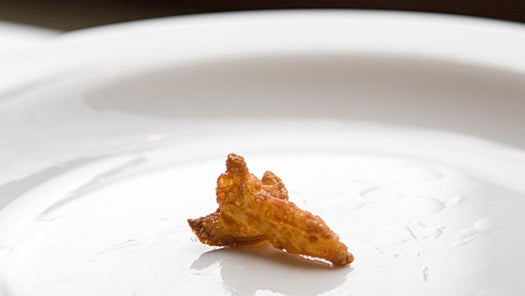Cornell Fabrication Lab Makes Edible Objects With 3-D Printer
Here at PopSci we often write about emerging technologies like 3-D printing, perhaps almost as often as we write about...

Here at PopSci we often write about emerging technologies like 3-D printing, perhaps almost as often as we write about space launches and rocket ships. And every now and then the use of high-tech gadgetry in the kitchen gives us reason to write about things like scallops and cheese. But until Cornell University teamed up with Dave Arnold and New York’s French Culinary Institute to create miniature scallop-and-cheese space shuttles using a specially equipped 3-D printer, we never thought we’d ever write about all three at the same time.
Cornell’s computational synthesis lab has created software tools that allow engineers to create edible objects using complex geometries that even a skilled chef would have a great deal of trouble creating by hand. A souped up 3-D printer allows creative culinary types to create pureed pastes of their ingredients that can then be layered onto one another via special extruding heads, much as conventional rapid prototyping machines print thin layers of plastics, metals, or glass.
So far the team has printed with all kinds of ingredients: cheese, chocolate, hummus, turkey, celery, scallops, etc. Which begs the question: if you could print anything out of, say, any two ingredients, what would you print? Feel free to get creative in the comments below.